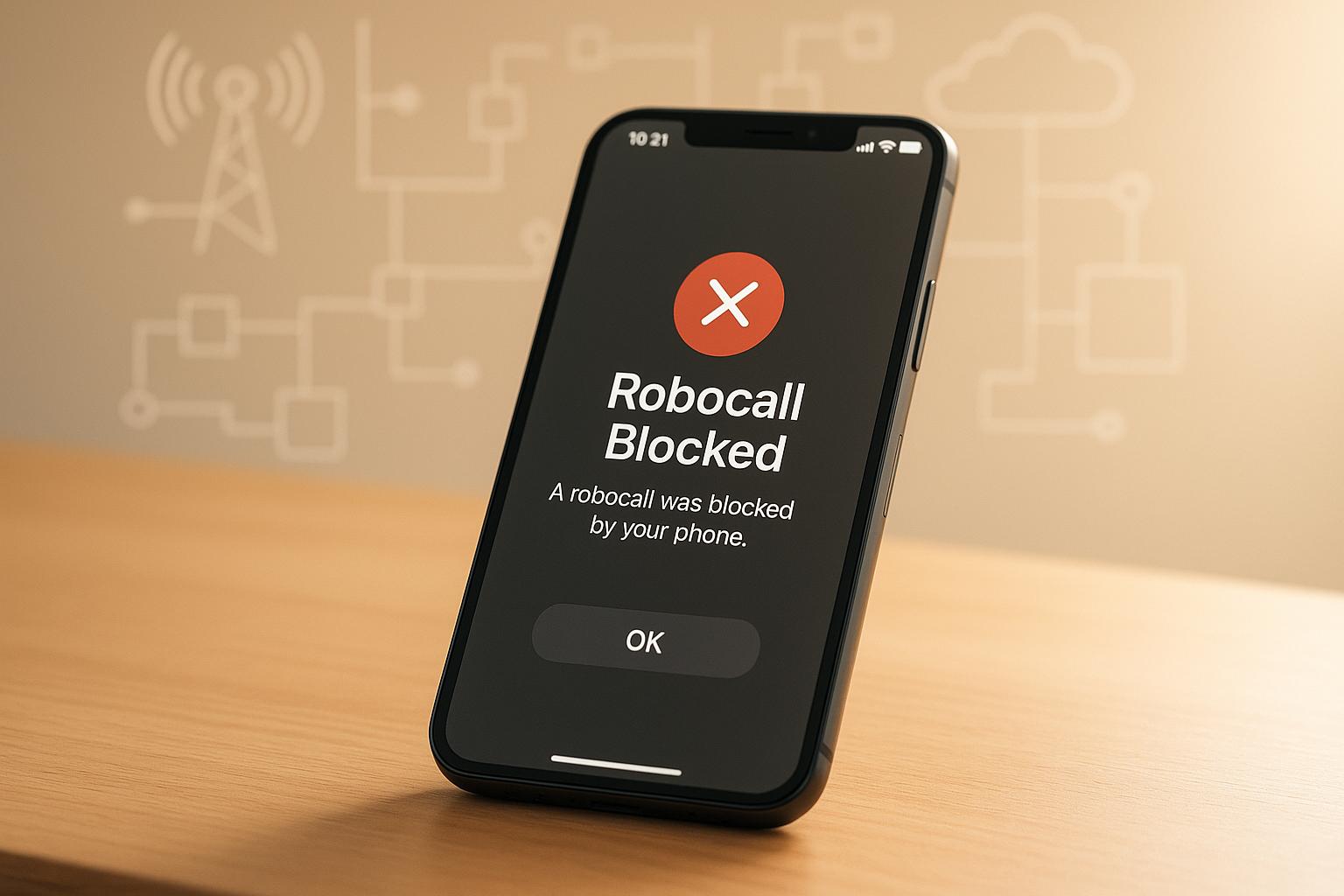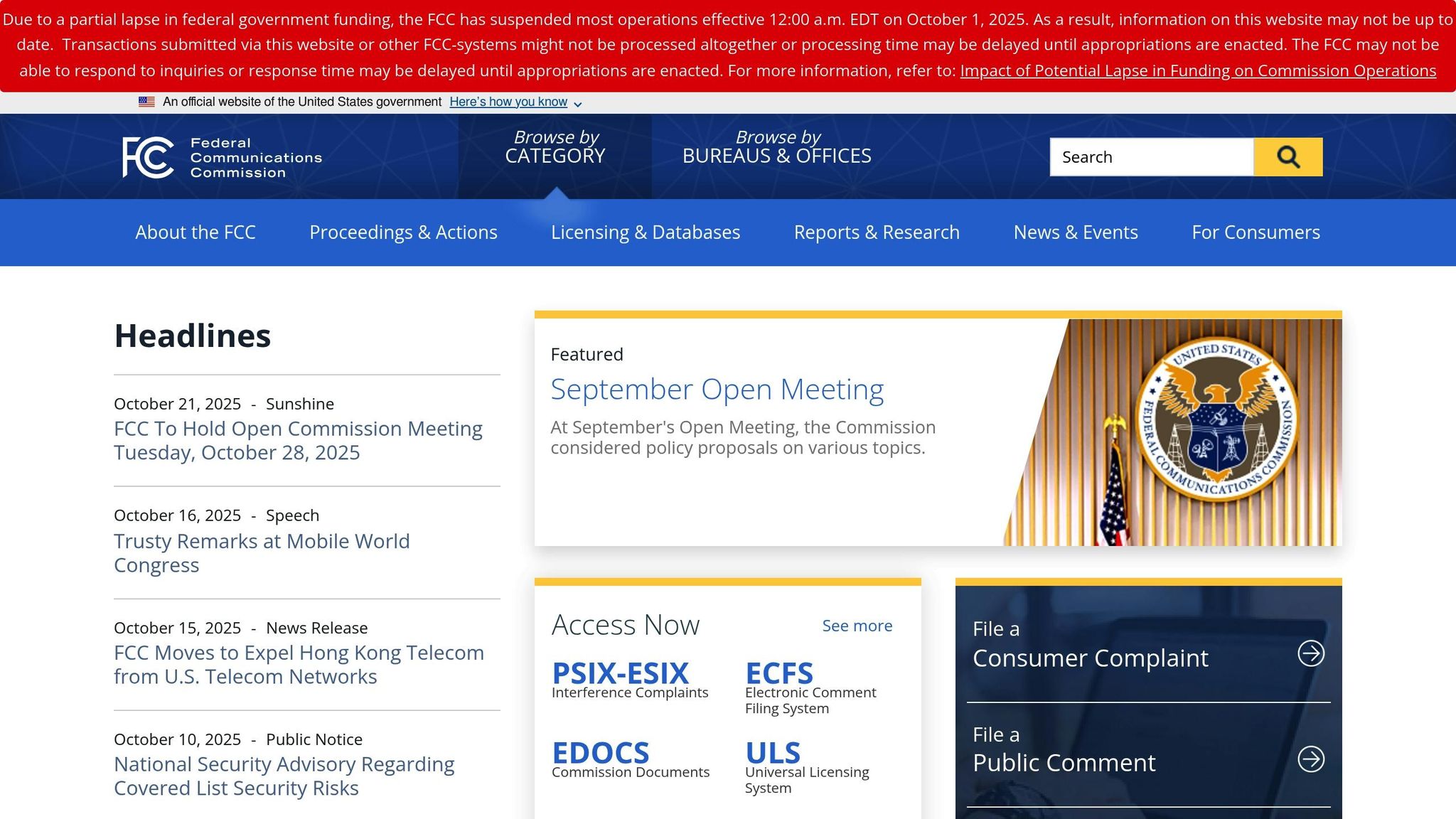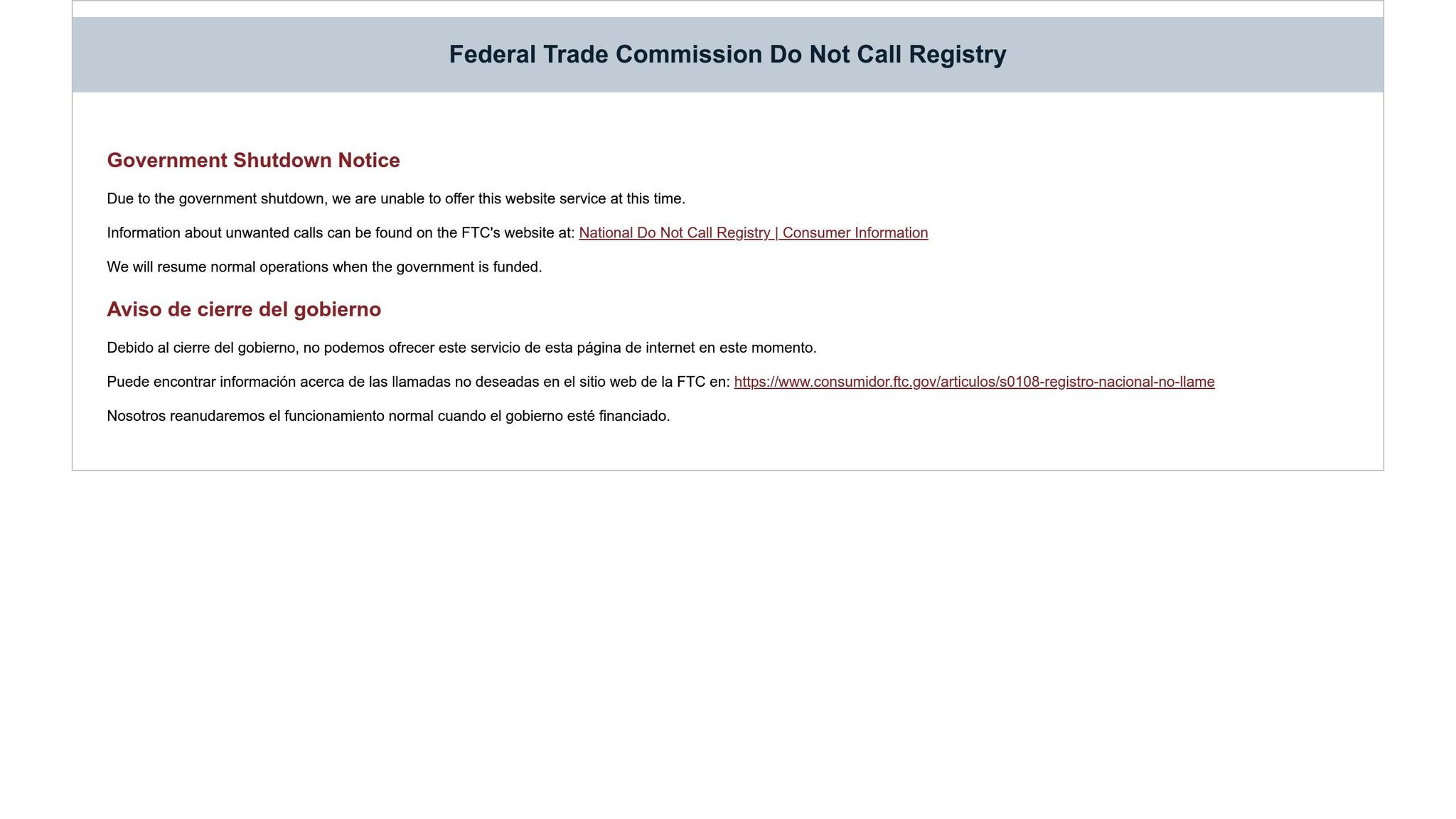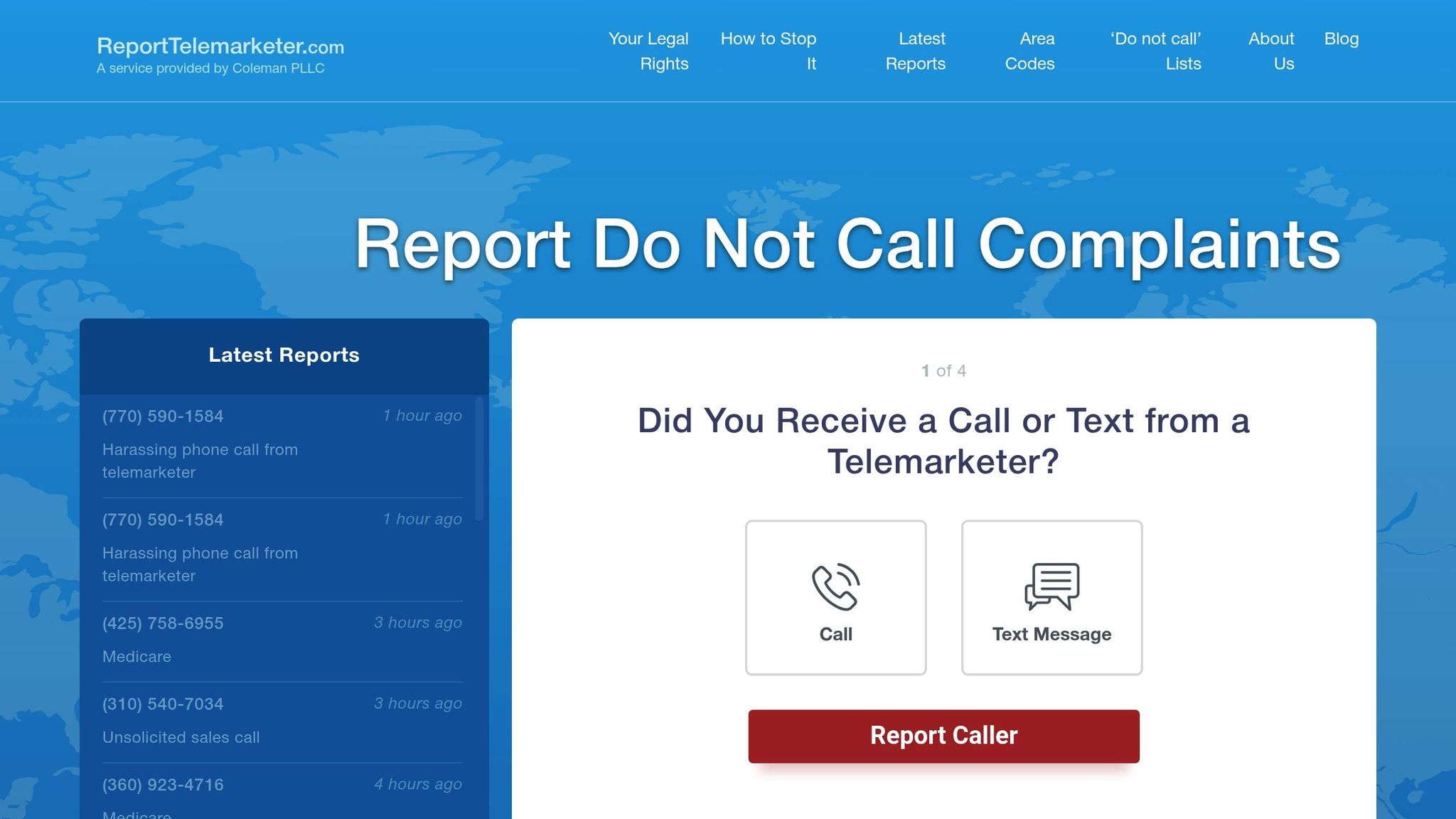
Robocalls remain a persistent problem, with billions of unwanted calls targeting Americans each month. To address this, the FCC has introduced new rules to strengthen protections and improve transparency for consumers. Key updates include:
- Expanded Do-Not-Originate (DNO) List Requirements: Starting December 15, 2025, all voice service providers must block calls from invalid, unallocated, unused, or subscriber-requested numbers across multiple checkpoints.
- Standardized Blocked Call Notifications: Providers must use SIP code 603+ for analytics-based blocked calls by March 24, 2026, ensuring consistent feedback to callers.
- STIR/SHAKEN Framework Progress: Major carriers now authenticate 74% of calls, with less than 10% of unwanted calls originating from these networks.
While these changes aim to reduce robocalls, smaller telecom companies face challenges in updating their systems to meet compliance deadlines. Consumers can also take proactive steps, like registering for the Do Not Call Registry and using reporting tools such as ReportTelemarketer.com to hold violators accountable. Together, these measures aim to create a stronger defense against robocall scams.
Cracking Down on Robocalls: Telecom Experts Tell Congress What’s Next
Latest FCC Rule Changes

On February 27, 2025, the FCC introduced the Eighth Report and Order, which includes two major updates: expanded requirements for the Do-Not-Originate (DNO) list and standardized blocked call notifications. These changes aim to strengthen call-blocking protocols and improve transparency for both providers and callers.
Expanded Do-Not-Originate List Requirements
One of the most impactful updates is the expansion of the Do-Not-Originate (DNO) list requirements. Previously, only gateway and messaging providers were obligated to block calls based on these lists. Now, every voice service provider involved in routing a call must block numbers on the DNO list. This creates multiple layers of protection to stop illegal calls from reaching consumers.
To comply, providers can choose any FCC-approved DNO list. However, the FCC has made it clear that lists lacking adequate scope will not be accepted. A valid DNO list must include numbers that are:
- Invalid
- Unallocated
- Unused
- Specifically requested for blocking by subscribers
Lists that fail to include these categories will be deemed inadequate by the FCC.
The new DNO requirements are set to take effect on December 15, 2025, giving voice service providers 90 days from the Office of Management and Budget (OMB) approval to update their systems and ensure compliance.
New Blocked Call Notification Standards
In addition to the expanded DNO requirements, the FCC has introduced standardized protocols for notifying callers when their calls are blocked. Under the new rules, providers must use SIP code 603+ for calls blocked through analytics-based methods. This ensures a consistent notification system across the industry.
The notification process depends on the blocking method:
- DNO List Blocking: Providers are not required to send any notifications when calls are blocked using a DNO list.
- Analytics-Based Blocking: For calls flagged by analytics systems (e.g., spam detection or suspicious patterns), providers must return the SIP "603+" code to notify the caller.
Providers must implement the SIP 603+ code by March 24, 2026, a full year after the Order’s publication. By this same deadline, providers must stop using older SIP codes (603, 607, and 608). However, SIP code 607 will still be allowed for calls blocked at a subscriber’s direct request without analytics. For non-IP networks, ISUP code 21 must be used as the notification standard instead of SIP code 603+.
The FCC has also recommended that providers adopt comprehensive DNO lists to minimize the need for notifications, which can save both time and resources. Additionally, voice service providers may be required to share their DNO lists with the FCC Enforcement Bureau during investigations.
How FCC Updates Affect Consumers and Telecom Companies
Recent updates to FCC rules are changing the landscape for both consumers and telecom providers. These measures, particularly the expanded robocall blocking requirements, aim to provide stronger consumer protections while introducing new responsibilities for service providers. The changes focus on enhancing call filtering and blocking capabilities across telecom networks.
Consumer Benefits
Consumers can expect a noticeable reduction in unwanted robocalls. By mandating that all voice service providers block calls from Do-Not-Originate (DNO) lists, the FCC has introduced multiple layers of blocking. This ensures that even if one provider misses a suspicious call, another can intercept it.
The success of earlier FCC initiatives suggests that these new measures will be even more effective. The updated DNO rules specifically target calls from invalid, unallocated, and unused numbers – frequent tools of scammers. This approach is designed to significantly cut down on fraudulent calls.
One key focus is protecting consumers from scams where callers impersonate trusted entities, such as government agencies or banks. These expanded blocking measures address numbers commonly exploited in such schemes, providing an extra layer of security for vulnerable groups often targeted by sophisticated scams.
Another improvement is the adoption of the standardized SIP 603+ notification system. This system provides consistent feedback to legitimate callers when their calls are blocked, helping reduce confusion and enabling quicker resolution with service providers.
While these updates bring stronger protections for consumers, they also create substantial challenges for telecom providers, particularly smaller companies.
Challenges for Smaller Telecom Providers
For smaller telecom companies, complying with the new rules presents significant obstacles. Upgrading technology and systems to meet the expanded DNO blocking and notification requirements can be costly and complex.
Non-IP network providers, in particular, face slower transitions to advanced technologies. Many smaller providers are still working to implement effective call-blocking measures. With a compliance deadline of December 15, 2025, these providers have limited time to update their systems and train their teams on the new protocols. Missing these deadlines could result in FCC enforcement actions.
To ease the burden, the FCC has introduced a phased timeline for compliance. However, the gap between smaller providers and major carriers remains significant. For example, 74% of calls from Tier-1 carriers are already authenticated using STIR/SHAKEN protocols, and less than 10% of unwanted robocalls originate from these carriers. This highlights the steep climb smaller providers face to achieve similar compliance levels.
sbb-itb-a8d93e1
What’s Next for Robocall Blocking
The FCC’s efforts to combat robocalls are ramping up, with new rules set to take effect and technological updates targeting gaps in current protections. These advancements aim to strengthen and expand the measures already in place.
When New Rules Take Effect
Mark your calendar: December 15, 2025. By this date, all voice service providers must comply with the expanded DNO (Do-Not-Originate) requirements. These rules require providers to maintain and use accurate DNO lists, creating multiple checkpoints to block illegal robocalls before they reach consumers.
Providers must ensure their lists exclude invalid, unallocated, unused numbers, and numbers blocked at the subscriber’s request. Any list that fails to meet these criteria will be considered unacceptable. Additionally, under the updated rules, providers must send the SIP "603+" code for calls blocked based on analytics, while no notification is required for blocks made using DNO lists.
Meeting these requirements is no small feat. Less than half of registered providers have fully updated their systems to comply. To assist, companies like Somos offer solutions such as their RealNumber® DNO product, which provides comprehensive DNO lists aligned with the FCC’s new standards.
STIR/SHAKEN and Other Technology Updates
Alongside these regulatory changes, technological improvements are playing a key role in tightening robocall controls. The STIR/SHAKEN framework has already shown results, contributing to an 8% decline in robocall volumes during the first half of 2022.
Today, major carriers authenticate 74% of calls using STIR/SHAKEN protocols, with fewer than 10% of unwanted robocalls originating from these providers.
Still, robocallers are finding ways to exploit vulnerabilities in smaller networks and through spoofed caller IDs. To address this, the FCC is extending STIR/SHAKEN requirements to smaller carriers and non-IP networks. These updates are designed to close loopholes and enhance the framework’s overall effectiveness.
How Consumers Can Get Enhanced Consumer Protection
While the FCC’s new robocall blocking measures offer a solid layer of protection, consumers can take extra steps to further reduce the flood of unwanted calls. These personal actions work hand-in-hand with federal efforts, creating a stronger shield against robocallers.
Registering for the Do Not Call Registry

The National Do Not Call Registry is a straightforward and effective starting point. This free federal service makes it illegal for most legitimate telemarketers to contact registered numbers, cutting down on the number of marketing calls you receive. Signing up is simple – you can register online through the official Do Not Call Registry website, and your registration takes effect within 31 days.
That said, the registry has its limits. It doesn’t block calls from political campaigns, charities, surveyors, or businesses you have an existing relationship with. And, unfortunately, it won’t stop illegal scammers who ignore the rules altogether. Still, for dealing with legitimate telemarketing, it’s a valuable tool.
Using Services Like ReportTelemarketer.com

For those calls that manage to sneak through, services like ReportTelemarketer.com provide a more aggressive way to fight back. Created by attorney Stefan Coleman, this platform has already assisted over 30,000 people in dealing with unwanted calls and texts. The service investigates reported robocalls to identify companies violating telemarketing laws. When violations are confirmed, they take action – sending cease and desist letters or even filing formal complaints.
"We use the telephone consumer protection laws to stop telemarketers from harassing consumers."
– Stefan Coleman
One of the standout features of ReportTelemarketer.com is its cost structure. The service is completely free for consumers, as attorney fees are recovered from telemarketers when legal actions succeed. In fact, consumers may even receive compensation – up to $500 per illegal call. It’s a proactive way to hold violators accountable while putting some money back in your pocket.
To report unwanted calls, users simply provide details about the caller, the timing, and the nature of the call through the platform’s website.
This approach complements the FCC’s efforts perfectly. While federal regulations aim to block robocalls at the network level, services like ReportTelemarketer.com zero in on individual offenders, delivering direct legal consequences. Together, these strategies create a two-pronged attack – making it harder and costlier for telemarketers to violate consumer protection laws.
The Path to Fewer Robocalls
Efforts to combat robocalls are gaining traction, though these nuisance calls remain a persistent problem. The FCC’s latest updates mark an important step toward reducing their impact. New rules now require all voice service providers to block calls flagged by Do-Not-Originate lists and to adopt standardized notifications using SIP code 603+. This layered approach aims to close existing loopholes and strengthen defenses against unwanted calls.
Currently, fewer than half of the 9,242 FCC-registered companies are fully compliant, making the December 15, 2025, deadline a critical milestone. Once the expanded blocking measures are fully in place, robocallers will find it significantly harder to exploit smaller networks or evade current protections.
Enforcement plays a key role in this effort. In 2024 alone, over $200 million in fines were issued to violators, underscoring the seriousness of these measures. Additionally, stricter implementation of the STIR/SHAKEN framework is helping to reduce caller ID spoofing, while the standardized notification system ensures that legitimate callers are informed when their calls are blocked. These regulatory updates, combined with hefty penalties, lay the groundwork for a comprehensive strategy.
Beyond these network-level measures, consumer tools are adding another layer of defense. Federal regulations aim to block robocalls at their source, but consumer reporting services provide an additional way to hold offenders accountable. Together, these efforts create a more unified approach to tackling the issue.
Ultimately, success will be measured by a noticeable reduction in unwanted calls. With over 3.6 million people affected and $10 billion in losses reported in 2024, the stakes are high. By combining stricter FCC requirements, consumer reporting tools, and tough enforcement, the fight against robocalls is becoming more effective. While robocallers will undoubtedly continue to evolve their methods, the coordinated response now in place makes it increasingly difficult and costly for them to operate.
FAQs
What changes has the FCC made to the Do-Not-Originate (DNO) list, and how do they benefit consumers?
The FCC has rolled out updates to the Do-Not-Originate (DNO) list to enhance defenses against illegal robocalls. Under these new rules, phone service providers must block calls that seem to originate from numbers on the DNO list – like those belonging to government agencies or invalid numbers frequently exploited by scammers.
For you, this translates to fewer scam calls and a more secure communication experience. If pesky telemarketing calls or texts still sneak through, you can report them to organizations that handle these violations and work to resolve them.
What is the new SIP code 603+ for blocked calls, and how does it enhance transparency for callers?
The SIP code 603+ serves as a notification to inform callers that their call has been intentionally blocked – either by the recipient or their phone service provider. This eliminates the ambiguity that often arises when a call doesn’t go through, helping callers understand that the block was deliberate and not due to technical glitches or other issues.
By offering this clear distinction, the 603+ code benefits both individuals and businesses. It provides transparency about call outcomes, simplifies communication, and minimizes misunderstandings about why a call might not have connected.
What obstacles do smaller telecom providers face in meeting the FCC’s updated robocall blocking requirements?
Smaller telecom providers often encounter specific hurdles when trying to meet the FCC’s updated robocall blocking requirements. These obstacles might stem from tighter budgets, a lack of advanced technical tools to implement sophisticated call-blocking systems, or the difficulty of keeping up with ever-changing regulations.
If you’re dealing with unwanted telemarketing calls or texts, you can make a difference by reporting them. Your reports play a crucial role in identifying violations and ensuring measures are taken to curb these intrusive practices.